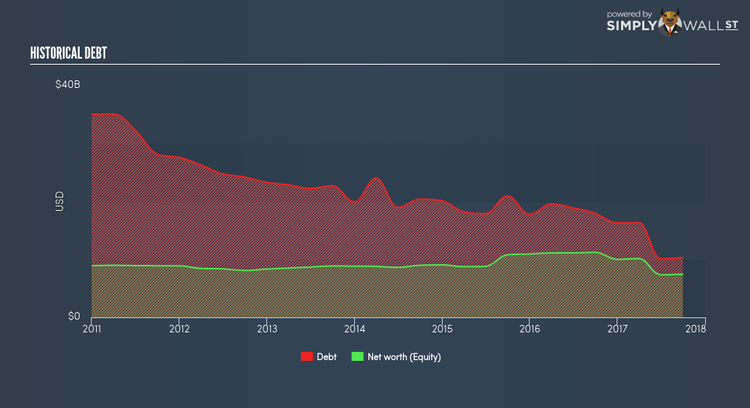Risk Factors You Should Consider Before Investing In CIT Group Inc (NYSE:CIT)

The banking sector has been experiencing growth as a result of improving credit quality from post-GFC recovery. Economic growth impacts the stability of salaries and interest rate level which in turn affects borrowers’ demand for, and ability to repay, their loans. As a small-cap bank with a market capitalisation of USD $6.49B, CIT Group Inc (NYSE:CIT)’s profit and value are directly affected by economic activity. Risk associate with repayment is measured by the level of bad debt which is an expense written off CIT Group’s bottom line. Today I will take you through some bad debt and liability measures to analyse the level of risky assets held by the bank. Looking through a risk-lens is a useful way to assess the attractiveness of CIT Group’s a stock investment. Check out our latest analysis for CIT Group
How Good Is CIT Group At Forecasting Its Risks?
CIT Group’s forecasting and provisioning accuracy for its bad loans indicates it has a strong understanding of its own risk levels. If the bank provision covers more than 100% of what it actually writes off, then it is considered sensible and relatively accurate in its provisioning of bad debt. Given its high bad loan to bad debt ratio of 158.54% CIT Group has cautiously over-provisioned 58.54% above the appropriate minimum, indicating a safe and prudent forecasting methodology, and its ability to anticipate the factors contributing to its bad loan levels.
How Much Risk Is Too Much?
CIT Group is engaging in risking lending practices if it is over-exposed to bad debt. Loans that cannot be recovered by the bank are known as bad loans and typically should make up less than 3% of its total loans. Bad debt is written off as expenses when loans are not repaid which directly impacts CIT Group’s bottom line. A ratio of 0.9% indicates the bank faces relatively low chance of default and exhibits strong bad debt management.
How Big Is CIT Group’s Safety Net?

CIT Group profits from lending out its various forms of borrowings and charging interest rates. Deposits from customers tend to carry the lowest risk due to the relatively stable interest rate and amount available. Generally, the higher level of deposits a bank retains, the less risky it is deemed to be. CIT Group’s total deposit level of 70.66% of its total liabilities is within the sensible margin for for financial institutions which generally has a ratio of 50%. This indicates a prudent level of the bank’s safer form of borrowing and a prudent level of risk.
Final words
CIT Group exhibits prudent management of risky assets and lending behaviour with sensible levels for all three ratios. It seems to have a clear understanding of how much it needs to provision each year for lower quality borrowers and it has maintained a safe level of deposits against its liabilities. The company’s judicious lending strategy gives us higher conviction in its ability to manage its operational risks which makes CIT Group a less risky investment.
Now that you know to keep in mind these risk factors when putting together your investment thesis, I recommend you check out our latest free analysis report on CIT Group to see its growth prospects and whether it could be considered an undervalued opportunity.
PS. Interested in CIT Group’s competitors instead? Take a look at our free platform for a deep dive into other bank stocks.
To help readers see pass the short term volatility of the financial market, we aim to bring you a long-term focused research analysis purely driven by fundamental data. Note that our analysis does not factor in the latest price sensitive company announcements.
The author is an independent contributor and at the time of publication had no position in the stocks mentioned.

